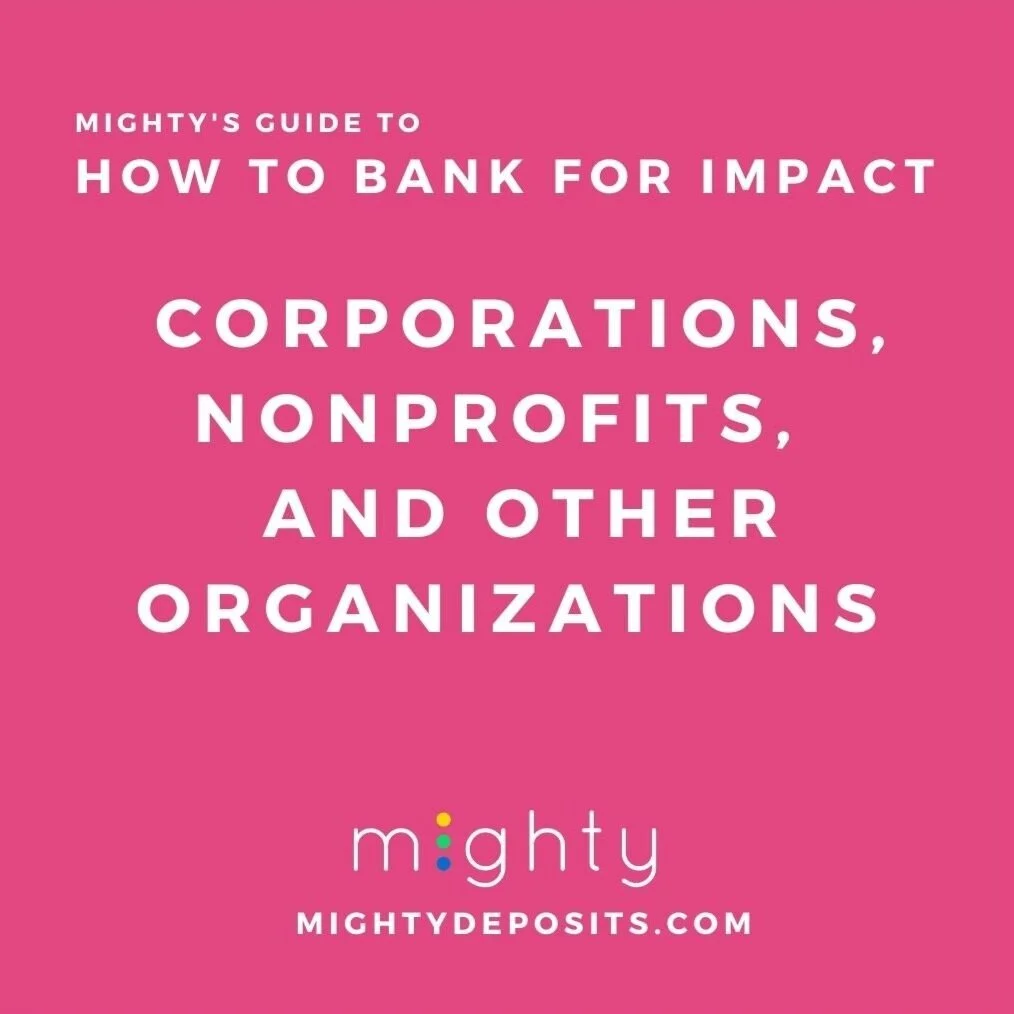CDFIs: what they are and how to bank with one
Mighty Deposits Guide, 2023 Edition
Community Development Financial Institutions (CDFIs) are banks, credit unions, nonprofit loan funds, and VC funds that go out of their way to be inclusive of low-income communities and communities of color, and in doing so, buck with traditional institutions that historically focus on serving only the wealthiest (and mainly white) clients.
The U.S. Department of the Treasury applies the CDFI badge to institutions that direct the majority of their financing for the benefit of disadvantaged communities (see requirements for CDFI certification, below).
CDFI banks are real, full-service banks that can serve all types of customers, and in addition, carry the extra badge of serving customers of all socioeconomic backgrounds.
Banking with a CDFI is a powerful way for individuals and organizations to guarantee their money is in a bank or credit union focused on providing services to economically disadvantaged communities.
As of 2022, there are 1,395 certified CDFIs in the U.S. Though there is at least one CDFI in each of the 50 states, the distribution is not even. Mississippi — the state with the lowest median household income — has over 100 CDFIs, while several other states have just one or two.
Requirements for CDFI certification
To become a CDFI, financial institutions must have a mission of expanding economic opportunity in economically disadvantaged communities. Specifically, CDFIs must direct at least 60% of financing (loans, loan purchases and guarantees, and equity investments) to either:
economically distressed communities
low-income populations
African American, Hispanic, Native American, Native Alaskan, Native Hawaiian, or other Pacific Islander communities
Types of CDFIs
There are several types of CDFIs, with loan funds being the most popular, followed by credit unions and banks. (Definitions sourced from the cdfifund.gov)
Community Development Banks— For-profit corporations providing capital to rebuild economically distressed communities through targeted lending and investments. There are 180.
Community Development Credit Unions— Member-owned non-profit cooperatives promoting savings, affordable loans, and other financial services. There are 471.
Community Development Loan Funds— Typically non-profit organizations providing financing and technical assistance to small businesses, microenterprises, affordable housing developers, and community service organizations. There are 584.
Community Development Depository Institution Holding Companies— Holding companies for banks or savings & loans. There are 144.
Community Development Venture Capital Funds— Organizations providing equity and debt-with-equity services to businesses in distressed communities. There are 16.
How to get involved with a CDFI
Individuals and organizations looking to use a CDFI have a range of options.
Get a loan from a CDFI— Entrepreneurs, future home-owners, business owners and others looking for loans are encouraged to seek out a local CDFI that may be able to meet their financing needs or recommend other resources. A full list of all 1,395 CDFIs, including loan funds, can be downloaded from cdfifund.gov.
Do your everyday banking with a CDFI bank or credit union— Support the impact of a CDFI by becoming a customer. Deposit accounts are insured through FDIC or NCUA insurance (up to $250k). Browse all CDFI banks and compare by features, products, and impact, here.
Make an equity investment in a CDFI— CDFIs need equity investments in order to grow their impact. Learn more in Impact Alpha’s coverage of the topic.
Corporations: make an impact deposit with a CDFI— Several major corporations and institutions have moved cash holdings into CDFIs as one method of supporting racial equity. Learn more about this growing trend in How to Bank for Impact: A Guide for Corporations and Other Organizations.
CDFI banks you can get started with online
Ready to get started opening an account with a CDFI bank? Have questions and need to speak with a banker at a CDFI to see if it’s a good fit for your organization? Below are CDFI banks that have opted-in to allow people and organizations to contact them directly via Mighty.



















